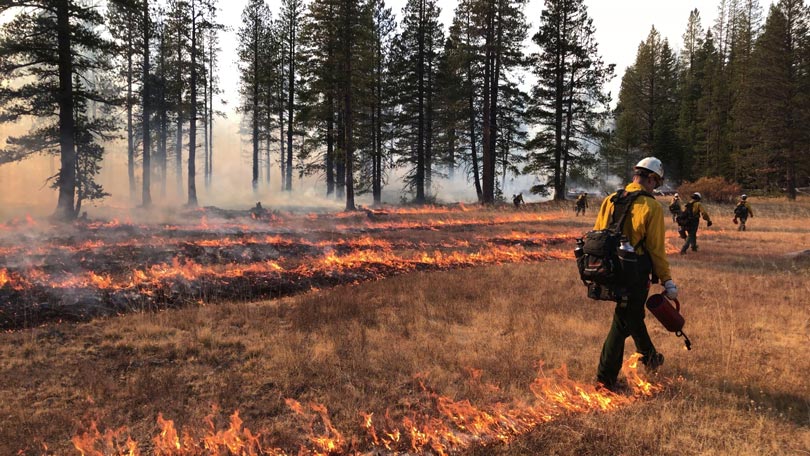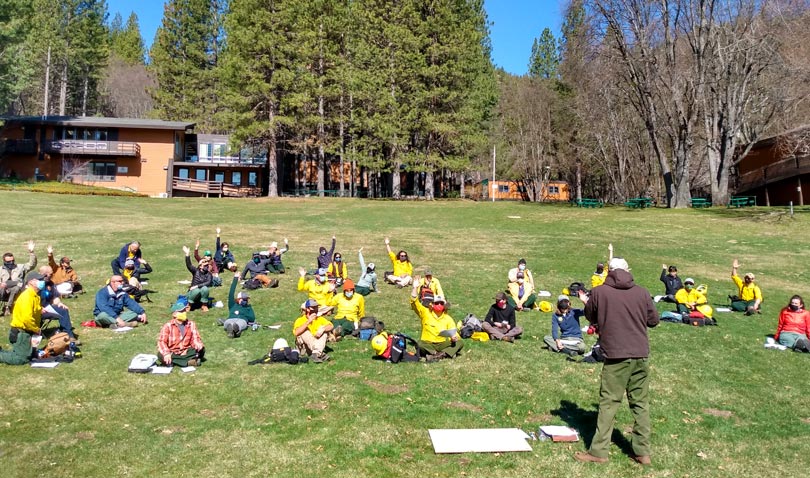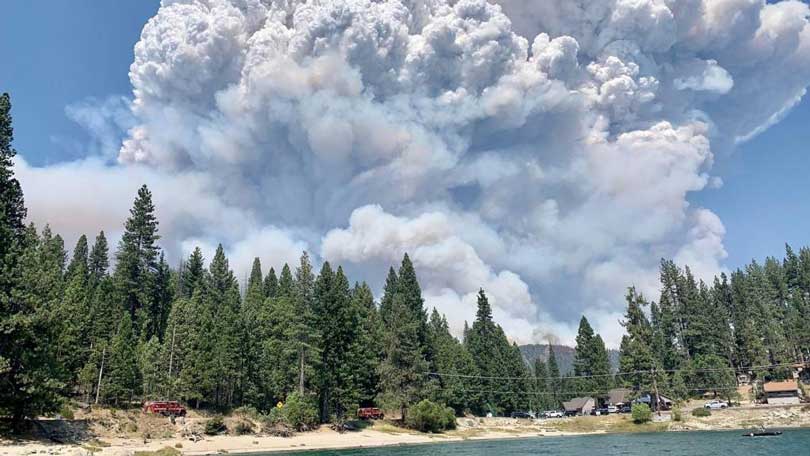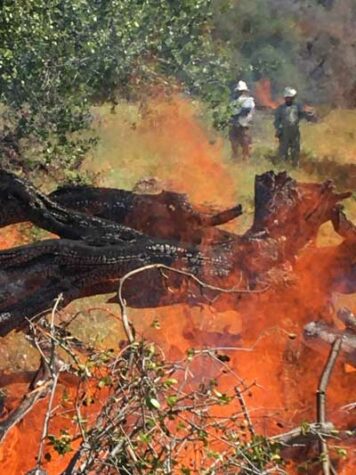
Native American tribes used fire to manage Sierra Nevada landscapes for millennia prior to the arrival of permanent European settlements in the 1800s—a practice that has continued on a more limited scale today. As the state of California works to restore wildfire resilience, it is partnering more with tribes to incorporate cultural burning ideas and techniques into modern land-management practices.
Looking to show first-hand the benefits that fire can have on the landscape, and to train more crews on how to utilize this management tool efficiently and safely, the Sierra Nevada Conservancy’s Governing Board, at its recent September Board meeting, authorized funding for a prescribed burn that includes guidance from several Native American tribes in the region.
The project will also result in the advancement of at least 20 participants toward the multiple certifications that existing rules require individuals to hold in order to work with fire as a management tool on state and federal lands. Members of local tribes will be given priority access to these certification opportunities.

Awarded to Huntington-USC Institute of California and the West, the $282,380 grant will help the Sierra-Sequoia Burn Cooperative (SSBC) conduct prescribed and cultural burns on 115 acres, while providing critical training to tribal and other local crews with the aid of Native American fire experts.
“We’re excited and honored to support a project that simultaneously puts beneficial fire on Sierra Nevada lands and supports Native American tribal members in the stewardship roles they have held since time immemorial,” stated Angela Avery, Sierra Nevada Conservancy’s Executive Officer, in a press release.
The funded treatments will occur on three private properties in the upper Kings River watershed in eastern Fresno County next to the Sierra National Forest. Nearby communities include Dinkey Creek, Shaver Lake, Tollhouse, and Trimmer Springs.
Last year, this region endured the devastating Creek Fire, which burned nearly 380,000 acres and destroyed more than 850 structures.

“The Creek Fire raged out of control for months due to a massive buildup of dead and dying timber that served as fuel. Had these forests been treated with prescribed fire under a controlled environment by trained personnel, I truly believe the Creek Fire would not have been so devastating,” said Ben Kimbler, a Sierra-Sequoia Burn Cooperative member and local rancher who lost more than 100 head of cattle in the blaze.

Complementing the forest-health work by the Cooperative will be the expertise and knowledge the Native American tribes of the area have to offer when it comes to prescribed fires. A vital part of their heritage, Native Americans have known for thousands of years the important benefits low-intensity fire can have on the landscape.
“As Tribal landowners we have worked to improve the health of the forest on our own ancestral homelands. We support these types of fuel-reduction projects as it helps reduce wildfire risk and improves forest health,” said Dirk Charley, Dunlap Band of Mono Indians Tribal Liaison.
Kim Sorini, Sierra National Forest District Ranger, agreed.
“We applaud the SSBC for its partnership with Native American tribes on this project.” She stated, “We recognize the value of our forest lands as the traditional homeland of multiple tribes with whom we regularly consult. With traditional ecological knowledge and a strong connection to the land, tribes are important partners in any project of this nature.”
The joint effort is expected to start sometime this fall and, hopefully, wrap up before June 2022. The Sierra-Sequoia Burn Cooperative Prescribed Fire Training Exchange will also include training tribal and other crew members so beneficial cultural burns that restore forest health can continue in other parts of the Southern Sierra.
“Our field staff will be given the opportunity to take an active role through participation in training and field projects that enhance stewardship and protection of ancestral lands from wildfire,” said Elizabeth Kipp, Chairperson of the Big Sandy Rancheria Band of Western Mono Indians of California. “These projects will also offer our field staff the opportunity to gain experience, education, and skills towards employment on future prescribed and cultural burning projects.”
Putting more “good fire”, that protects resources and restores important ecological functions, on the landscape is an important element of California’s Wildfire and Forest Resilience Action Plan and critical to any realistic regional approach to protect the Sierra Nevada for all Californians. In order to bring good fire back at scale, we need to empower more land managers to use it to steward the land.

